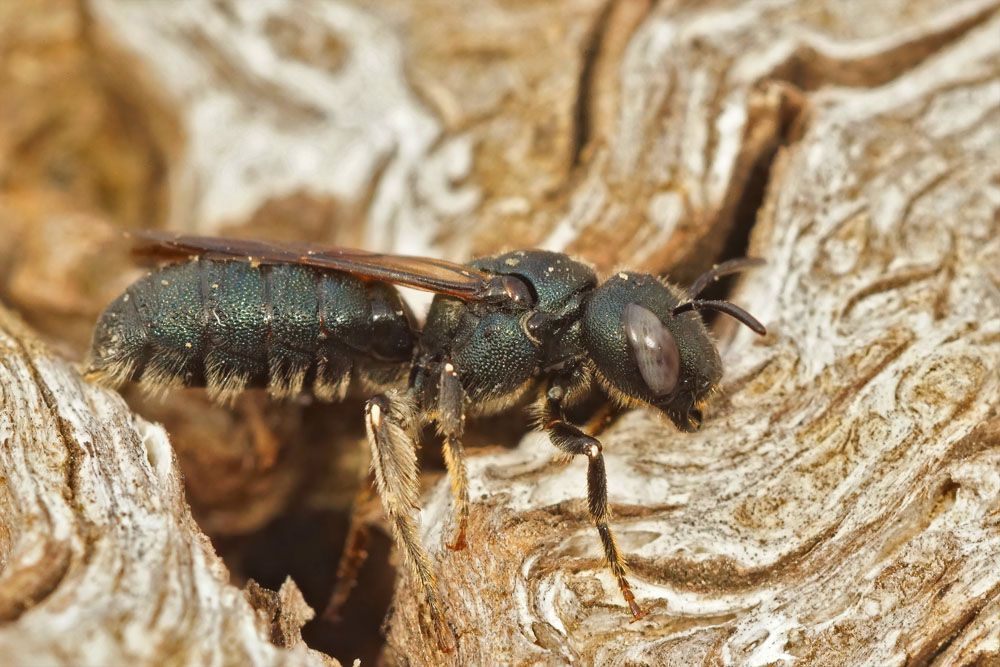
Small Carpenter Bees – Ceratina spp.
Small carpenter bees (Ceratina spp.)
Latin Name: Ceratina spp.
Common Name: Small Carpenter Bees
Appearance:
- Small carpenter bees are a widely spread and moderately diverse Xylocopinae (Hymenoptera: Apidae) lineage with about 350 species. Most of them are darkly metallic to black; however, others may be brightly metallic, like the more well-known Pithitis Klug members.
- Small carpenter bees are black with bluish-green or blue highlights. They may have yellowish white patterns on the forehead, thorax, and legs. These bees are only 3/8 inch in length.
- Small carpenter bees are black, bluish-green, or blue, many of which have a yellowish or whitish sign on the clypeus, pronotal lobes, and legs. The following are the differences between the two Ceratina species found in Florida:
Ceratina cockerelli (male and female): 3 to 4.5 mm in length; head and thorax largely black, abdomen mostly black with brownish or tawny regions; head and sputum (dorsum of the thorax) mostly polished, punctures absent.
Ceratina dupla (both sexes): body length 6–8 mm; body dark metallic blue; perforated, not polished head and sputum Plants that serve as hosts include: The broken stems of “weeds,” rose stems, and sea oat stems have been recorded as nesting sites for little carpenter bees. Females collect pollen and nectar from the blooms of at least 25 plant groups, including roses, blackberries, and marguerite daisies.
Territory:
It is found throughout Florida and most of the eastern United States.
Damages caused by Small Carpenter Bees:
Carpenter bees often make tunnelling to breach the interior of the wood. Dashes, spots, and trenches are examples of this type of damage. Carpenter bees, unlike termites, do not have to be concerned about being exposed to air outside of their tunnels.
Gall maker’s description:
Galls are tree growths that wasps, flies have taken over, and other insects to create a casing of plant tissue that protects and supports the gall maker’s growing young. Gall-maker insects include a variety of wasps, flies, and a few aphids and mites. Most growths, except some twig and stem galls, do not affect healthy trees. Galls can develop on the leaves, bark, flowers, buds, or roots of plants. Over half of these fascinating critters are attracted to oak trees.
Life history and Habits:
Small carpenter bees chew through the pith of powdered stems and stick to make their nests. They will carve out separate chambers for each brood, feeding each egg pollen and nectar mush. Part species are subsocial and will nest near one another, while others are weakly eusocial and share some of the nesting responsibilities. Females overwinter as adults in hollowed-out stems, then excavate these same stems again in the spring to build their nests.
